#agni's philosophy
Text




Steal her look! 💋 Agni + Fashion design
Agni's Phisolophy (—)
38 notes
·
View notes
Text

Agni from the Agni's Philosophy Square Enix Test Demo as Valigarmanda Summon ala FFXVI style by [email protected]!
1 note
·
View note
Text
Bāla Rāma Ayodhyā Mandir ‘Prāṇa Pratiṣṭhā’ – A Vedic Perspective
Dr. Raghava S. Boddupalli
The entire world is aware of the Bāla Rāma Ayodhyā Mandir ‘Prāṇa Pratiṣṭhā’ that was performed on Puṣya, Śukla, Dwādaśi, the 22nd January 2024, by the Prime Minister of India, Shri Narendra Modi ji. This was a momentous occasion of the installation of the idol of Bāla Rāma in the newly built Rāma Mandir at Ayodhyā. To witness the occasion, people from every walk of life…

View On WordPress
#Agni#Ayodhya#Culture#Dharma#Dharma Sastra#jyotish#Muhurta#Philosophy#Prāṇa Pratiṣṭhā#Rama#Sri Ram Mandir#Vedas#Vedic#Yajna
0 notes
Text
South Asian and Hindu Influences in ATLA (Part 1)
disclaimer: i was raised culturally and religiously hindu, and though i've tried to do my research for this post and pair it with my own cultural knowledge, i'm not an expert on hinduism by any means. should i mess up, please let me know.
please also be aware that many of the concepts discussed in this post overlap heavily with religions such as buddhism and jainism, which might have different interpretations and representations. as i'm not from those religions or cultures, i don't want to speak on them, but if anyone with that knowledge wishes to add on, please feel free.
it's well-known that atla draws from indigenous, east and southeast asian influences, but something i rarely see discussed in the fandom is the influences the show takes from hinduism and south asia, and there are actually far more than i think people are aware of.
so here's a (non-exhaustive list) of the main inspirations atla drew from south asian culture and hinduism, starting with...
The Avatar
the title of the show itself is taken from the ancient language of sanskrit, often considered the sacred tongue of the hindu religion. in sanskrit, the word "avatar" means to "descend" or "alight".
the concept of the avatar is a very old one, referring to the physical incarnation of a powerful deity or spirit. the idea of the avatar is most often linked to the god Vishnu, one of three supreme hindu gods collectively called the trimurti, or trinity. the avatar is said to manifest upon earth primarily in times of great need, when balance must be maintained between the forces of good and evil.
atla borrows heavily from this idea in having aang be the incarnation of a divine spirit who returns to the world during a time of immense strife, and is tasked with defeating a great evil to bring balance back to the world. and though i don't know if it was an intentional reference, it's interesting to note that Krishna, the most famous incarnation of Vishnu was also reborn amidst a fierce storm and carried through a raging sea to a new home where he would be protected from the king who sought to kill him. sounds a little familiar, doesn't it?
Agni Kai and the Philosophy of Firebending
the word "agni" derives from the sanskrit name Agni, the god of fire, though it can also generally mean "fire".
the concepts of lightning bending and the sun being the source of firebending are likely also taken from the idea of Agni, since he's said to exist simultaneously in three different forms on three different dimensions: as fire on earth, as lightning in the atmosphere, and as the sun in the sky.
Agni is a significant aspect of many rituals, including marriage rites, death rites, and the festivals of holi and diwali. the concept of Agni is one of duality: life and death, rebirth and destruction. hindu rituals accept and celebrate both aspects, revolving around the idea that destruction is not separate from creation, but rather necessary to facilitate it. the cremation of the dead, for instance, is seen as purification, not destruction: burning away the physical form so the soul is unencumbered, set free to continue the reincarnation cycle.
this influence can be seen in the firebending masters episode, which discusses the idea of fire being vital to life. the sun warriors safeguarding the original fire and demanding that zuko and aang bring fire to the dragons as a sacrifice could also reference the ritual of Agnihotra - the ritual of keeping a fire at the home hearth and making offerings to it. the purpose of this ritual differs depending on which text you refer to, but it is generally believed to purify the person and atmosphere in which it is performed, similar to how zuko and aang must make offerings to ran and shaw and survive their fire before being deemed worthy and pure.
Agnihotra is said to serve as a symbolic reminder of the vitality and importance of fire as the driving force of life, a lesson that zuko and aang also internalize from their encounter with the dragons.
Bumi
bumi's name is taken from the sanskrit word "bhumi", which means "earth". it's also the name of the hindu goddess of the earth, bumi or bhudevi.
one of the things the original animation didn't do and which i really enjoyed about the live action was that they made bumi indian and added desi inspiration to omashu. it makes perfect sense for a king whose name is as hindu-inspired as they come.
NWT Royal Palace
chief arnook's palace in the northern water tribe takes inspiration from the gopurams of hindu temples, massive pyramidal structures that served as entrance towers to the temple.
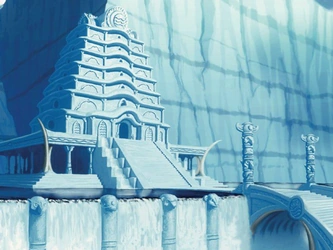

gopurams were built tall enough to be seen for miles around, beacons to signal tired or weary travellers who wished for a place to rest that a temple was nearby. it's a nice touch that the chief's palace is located in front of the spirit oasis, a similarly symbolic entryway to a sanctuary housing otherworldly deities.
Betrothal Necklaces
to preface: i doubt this was an intentional reference, and this great post talks about other cultures that could have inspired the water tribe betrothal necklaces. given the desi influence in the nwt architecture however, i figured it was worth mentioning.
the idea of betrothal necklaces being given to women by their male partners is similar to the thaali, a necklace given to hindu wives by their husbands. during hindu weddings, grooms tie the thaali around their brides' necks to symbolize their marriage. once given, wives are expected to wear their thaali till the day they die, as doing so is believed to bring good luck, health and prosperity to their husbands.
Chi-Blocking
though chi-blocking takes primary inspiration from the art of Dim Mak, it is also influenced by the south indian martial arts forms of adimurai and kalaripayattu, both of which include techniques of striking vital points in the body to disable or kill an opponent.
kalaripayattu also shares parallels with firebending, being a very physically demanding, aggressive martial art that emphasises the importance of discipline and mental fortitude. control of the mind is essential to control of the body, a philosophy similar to that espoused by iroh across the show.
Wan Shi Tong's Library
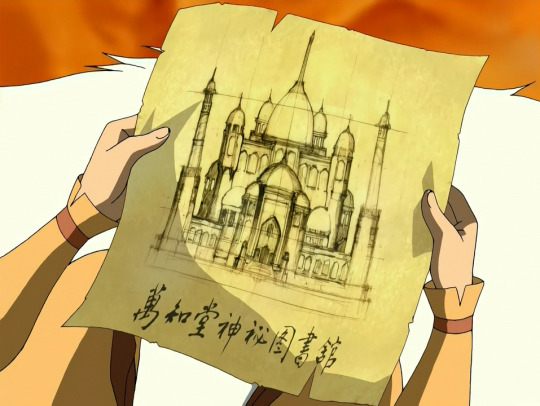
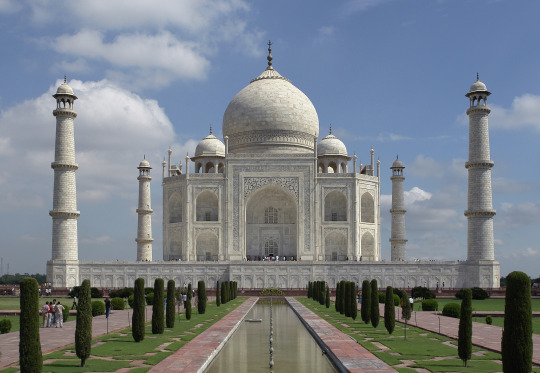
the library draws inspiration partly from the taj mahal, the famous mausoleum constructed by shah jahan during the mughal empire as a monument to his beloved wife, mumtaz mahal.
i'll end this post here since it's getting too long as it is, and the following section will be even longer. for while atla treated the concepts in this post with respect, the same unfortunately cannot be said for its depiction of guru pathik and combustion man - both of which we'll be discussing next.
810 notes
·
View notes
Text

Hare Sri Krishna ॐ
Vishwaroopa ("Universal form", "Omni-form"), also known popularly as Vishvarupa Darshan, Vishwaroopa and Virata rupa, is an iconographical form and manifestation of Shri Vishnu or his avatar Krishna. The direct revelation by the One without a Second, Master-Lord of the Universe. In the climactic war in the Mahabharata, the Pandava prince Arjuna and his brothers fight against their cousins, the Kauravas with Shri Vishnus Avatar Lord Krishna as his charioteer. Faced with moral dilemma that whether or not to fight against and kill his own or for dharma, Shri Krishna discourses him about life and death and reveals his Vishvarupa as a theophany. In Bhagawat Geeta, Krishna reveals himself as the Supreme Being and finally displays his Vishvaroopa to Arjuna. Arjuna experiences the vision of the Vishwaroopa with divine vision.
Lord Vishnu here is depicted in a grand manner as representing a magnification of his essence containing the entire cosmos, in a form known as Vishwaroop (Vishwa - the cosmos; Roop - form or manifestation). This depiction came from the ancient Hindu philosophy which indicated that through the diversities of creation there always is a connecting essence that threads everything into a unified whole. While the Trinity of Brahma, Vishnu and Shiva represents the Supreme Being's diversified manifestation, the Vishwaroop form of Vishnu represents the spiritual concept of all creation being nothing more than diverse manifestations of a single essence. Since Brahma's function ceases once the process of Creation is completed and Shiva himself represents the cosmos or an extension of the cosmos, it is Shri Vishnu, in whom the Creation sustains and prevails, who requires cosmic magnification as the form of Vishwaroop to drive home the point that the Supreme Being not only contains all creation but also sustains it.
The Vishwaroop depiction shows Shri Vishnu as having innumerable forms eyes faces mouths and ears. All creatures of the universe are part of him. He is the infinite universe, without a beginning or and end. Each of these has its own cosmic function or represents an aspect of the cosmos. The gods depicted include Shiva, Brahma, Ganesha, Hanuman, Indra, Agni, Surya , Chandra, Maruta (Wind God), Kubera (God of wealth), Varuna (God of water) and Yama (Time) and Brahma's three sons. Various sages, asuras , demons, gods and goddesses, while Shri Vishnu retains the central position. Amongst few, Shiva, Brahma and Vishnu together form the Trinity, Ganesh and Hanuman represent faith and divinity. Agni or Fire represents life, energy and vitality. Maruta, the wind-god represents space, while Indra represents rains and cosmic balance. Yama depicts the infinite nature of time while Varuna the ocean God represents water. Kubera represents prosperity and riches. The Sun and Moon represent the cycle of birth, death, decay and finally dissolution. Brahma's three sons represent the entire mankind. Taken together as one entity they constitute the entire cosmos.!!!
Hari Om Namo Narayana - Hari Om Tat Sat - Jai Shri Narayana Ke Vishwaroopa!
57 notes
·
View notes
Note
Hey Meat! Currently combing through Matt Clayton’s Hindu Mythology: A Captivating Guide to Hindu Myths, Hindu Gods, and Hindu Goddesses and I was wondering if you could give like a little introduction to the main concepts/gods/goddesses? I’m seeing many terms like “the Veedas” and “the Shastras” as I go through it and I’m picking up context clues and I could probably google them but I’d like to hear from actual people and especially those who know and care deeply about these Myths (like you <3). So… can you help me? /gen
Heyyy Neptune! First of all I apologize it took me so long to answer you dfnsfjfdjg forgive meeee
I love how ardently you're researching Hinduism. I haven't really read his book, but I'll help you with giving you an overview of it, so to speak.
Firstly lemme tell you about the Vedic knowledge system, which consists of:
Vedas
Vedangas
Upavedas
Vedas: These are the oldest known scriptures of Hinduism. The religion has four Vedas, namely the:
Rig Veda (RV): book of hymns to the deities.
Yajur Veda (YV): book of mantras and worship rituals
Sama Veda (SV): book of chanting songs
Atharva Veda (AV): book of procedures of everyday life
Each of them have four subdivisions:
Samhitas (mantras, hymns, prayers and benedictions)
Brahmanas (explanations and instructions on performing Vedic rituals)
Aranyakas (texts on the meaning and symbolisms of rituals and ceremonies basically). They were mainly composed by sages who meditated in the wilderness, hence the name of the texts (aranya means forest in Sanskrit).
Upanishads (texts on meditation, philosophy and spiritual knowledge)
Upasanas (additional). These are texts on worship.
Vedangas: These are the six auxiliary disciplines of Hinduism, and are heavily linked to the Vedas. They are:
Shiksha: Study of phonetics
Vyakarana: Study of grammar
Chhandas: Study of poetic metres and rhythm
Niruktas: Study of etymology
Jyotishya: Study of astrology and astronomy
Kalpa: Study of rituals and guide to ritual instructions
Upavedas: These are texts regarding certain fields of work like:
Ayur Veda: Study of medicine and life sciences
Gandharva Veda: Study of music, art and dance
Dhanur Veda: Study of archery and warfare
Arthashastra: Study of business and administration
Speaking of Shastras, they are kinda similar to Upavedas, and deal with certain fields of knowledge, like we saw in the case of Arthashastra. There are many shastras:
Bhautikashastra - Study of physics
Rasashastra - Study of chemistry
Jivashastra - Study of biology
Vastushastra - Study of architectural science
Shilpashastra - Study of mechanical arts and sculpture
Nitishastra - Corpus on ethics and policies
Alamkarashastra - Study of rhetorics
Kavyashastra - Study of poetics
Sangitashastra - Study of music
Natyashastra - Study of theatre and dance
Yogashastra - contains instructions and teachings on yoga
Mokshashastra - contains instructions and teachings on moksha
Nyayashastra - contains instructions and teachings on justice, laws and judgement
Dharmashastra - contains instructions and teachings on dharma
Kamashastra - contains instructions and teachings on love, desire and pleasure.
And so on.
Then we have the Puranas, which are texts on various topics, usually legends and lores. A few examples are:
Brahma Purana
Vishnu Purana
Matsya Purana
Kalika Purana
Vamana Purana
Shiva Purana
Agni Purana
Bhagavata Purana
And so on. The latest Purana ever written was the Kalki Purana, which was around 400-600 years ago. It is believed that Ved Vyasa (the author* of the epic Mahabharata) composed all these Puranas as well. But many disagree.
*some believe Ved Vyas got Ganesh (the God of wisdom, success and remover of obstacles, and the son of Shiva) to write the Mahabharata for him. While some believe Ved Vyas wrote it himself.
Then we have the Sutras which are aphoristic (concise expression of a general truth/principle) texts. Some examples are:
Brahma Sutras
Yoga Sutras
Nyaya Sutras
Kama Sutra
and so on.
Then comes Itihasa (historical texts), which include the two major epics of Hinduism, namely:
Ramayana (composed by Valmiki)
Mahabharata (composed my Vyasa/Ganesh)
Read the epics I'll not spoil it for ya heehee
Now, for the Gods. Oh man there are so many, but not 33 crore (1 crore = 10 million), contrary to popular belief, but rather 33 types.
In the very beginning of the pantheon, the main Gods were:
Indra (god of thunder and rain and the King of Gods)
Agni (god of fire)
Mitra (god of friendship, sun, daylight)
Varuna (god of waters, oceans, night time)
Vayu (wind god)
Soma (wind god, also sometimes called the moon god)
Ushas (goddess of dawn)
Ashwins (twin solar gods of medicine and sons of Surya)
Surya (Sun god)
Rudra (another wind/storm god who later became another form of Shiva)
Vishnu (bro doesn't have any specific assigned field tbh)
And a few others like Brihaspati (Jupiter god), Pushan (solar god of meetings, marriages, roads and cattle), Savitr (god of speed and cosmos) and many others.
Now there was this supreme vague deity in the Vedas. It's not Brahman yet. They (for the lack of a better set of pronouns) appear later. But it is some kind of supernatural force that let to the creation of this universe, and was initially mostly referred to as Prajapati (sometimes it wasn't one being though, rather a group), from what I can infer. Some may even called em Purusha. In the link you'll also get the First Creation Myth of Hinduism.
There is also an agnostic section in the Rig Veda, known as the Nasadiya Sukta. In this specific section we know there's some form of a supreme deity, but it's very vague as to what it is.
Moving on, in around mid-Vedic period, Vishnu became heavily popular, and two new deities came into being, namely Brahma (who soon got the title of Prajapati) and Shiva (from Rudra because previously Rudra had an alternative name called Siva. So Ig that's where 'Shiva' stemmed from. But again not sure).
Vishnu and Shiva became extremely popular, to the point that they got an entire sect of people dedicated to each of em, hence Vaishnavism and Shaivism (respectively) were born. Vaishnavs heralded Vishnu to be the Supreme God, while Shaivites heralded Shiva to be the Supreme God. (Soon Harihar or Vishnu-Shiva sect also emerged where both the Gods were considered the same, and hence both were the Supreme Gods, or Supreme God, if we consider them one entity) But in the future we can see Vaishnavism took over the spotlight, and finally during the age of the epics, Sanatan Dharma was born, which eventually became synonymous with Hinduism, and now almost everyone considers Vishnu is the Supreme Lord (while many others consider it to be the Brahman, who Vishnu, Shiva and Brahma are a part of).
Vishnu actually gained the most popularity from the two epics that I've mentioned, and the first one is almost entirely surrounded around his avatar, Ram (yes he has avatars now). His most popular avatars include Ram and Krishna, and the latter has an entire organization dedicated to him (ISKON or International Society for Krishna Consciousness), and this org considers THIS avatar as the Supreme Lord, and actually considers Vishnu as his avatar, not the other way around. Krishna also appears in the famous Bhagavad Gita, which is the prime philosophy book of guidelines for the Hindus today.
Buckle up, it's about to get more confusing cuz now Vishnu is our main character for a while (bro has HEAVILY influenced this religion atp there's no turning back for him now). His evolution is so interesting cuz who'd have thought in the Rig Vedic times that he'd grow up to be THIS popular TOT. Not Indra for sure xD.
Anyhoo so about Vishnu's avatars. He has ten main avatars that appear through the cycle of Hindu Yugas (eras):
Matsya: Big fishiee. Some paintings portray him as a merman tho.
Kurma: Giant tortoise go brrr.
Varaha: A boar-man :D. Pumba's gunna vibe with him fs.
Narasimha: Very angy lion-man. Will be besties with Sekhmet in a heartbeat i just know it.
Vamana: Cute "lil" dwarf (covered the universe in three steps)
Parshurama: Appears in the Mahabharata
Rama: Main character of Ramayana (hence the name), and is the younger brother of Balarama.
Krishna: One of the main characters of the Mahabharata
Balarama/Buddha (sources vary)
Kalki (future avatar)
Now Mohini is the female form of Vishnu. Whether or not she counts as an avatar is debated. She's the goddess of beauty and a seductress that lures bad guys (mostly Asuras) and then kills them, or atleast teaches them a lesson (but she also attracts the devas sometimes. Shiva for example). So yeah.
His wife is Lakshmi, who's the goddess of wealth, fortune, power, beauty, fertility and prosperity. She also has avatars btw.
Now the Second Creation Myth is pretty messy. Different sects have different takes on it. Usually it is considered that:
Brahma created the universe (or universes in case of the multiverse version).
Vishnu preserves the universe
Shiva destroys the universe
This process is considered cyclic and after the destruction Brahma creates a new universe, and it keeps repeating.
The origin of these three gods are also debated. Some say Brahma created Vishnu and Shiva, some say Vishnu created Brahma and Shiva, some say Lakshmi created Brahma, some say Shiva created Brahma and Vishnu. Some say Vishnu and Shiva are two of the Adityas (comprising of Indra, Agni, Mitra, Varuna, Surya etc.), and hence the children of Kashyap and Aditi.
Quick desc of Shiva is that he's the god of destruction, rebirth, time, benevolence etc. He also has avatars, plus a female form, called Shivani. His wife is Parvati, who ALSO has avatars, primarily Kali, Durya, Gauri etc. Sometimes Parvati and Lakshmi's avatars overlap. Sometimes, Vishnu and Parvati's avatars overlap (like Krishna-Kali).
He and his wife have two sons- Ganesha (god of wisdom, beginnings, remover of obstacles etc.), and Kartikeya/Murugun/Skanda (god of war). Who's the elder one is debated but usually Kartikeya is considered older.
Also Brahma's wife is Saraswati (goddess of wisdom, knowledge, music, flowing water, abundance etc.), who was born from him. Bro has faced some issues with falling for ppl (women) he has created actually lol, which is why he was cursed by Shiva and even lost one of his heads, hence ending up with four heads, when he initially had five. Check this site out as to why he was cancelled by Mahadev (another name of Shiva).
Now we have two Holy Trinities:
Brahma, Vishnu, Shiva (However, Vishnu and Shiva are way closer to Indra, while Brahma's kinda like the dad of the group, yk)
Saraswati, Lakshmi, Parvati
Then we have the Devas and the Asuras, who can be compared to the Aesir and Vanir, in a way. The Devas are usually the benevolent one, who attained the amrit (elixir), while the Asuras are usually the antagonists. But tbh, in my opinion, both of these groups are morally grey as fock.
Parents of Devas (Rishi/sage Kashyapa and Aditi)
Parents of Asuras (Rishi/sage Kashyapa and Diti)
Diti and Aditi and daughters of king Daksha (one of the Prajapatis). The reason the Asuras turned out the way they did was cuz Diti approached Kashyap at an unholy hour, to put it shortly. Sources say she was also jealous of how Aditi's kids turned out, which might be another factor to how her kids turned out in turn (lot of 'turn's we're getting ahah)
They are described well in the Samudra Manthan, from the Vishnu Purana. Have a look.
Now see, this stark contrast between the Devas and the Asuras didn't quite exist back in the earliest Rig-Vedic period. In fact, some of the most prominent Devas were referred to as Asuras in the Rig Veda, most famously Varuna, who was actually referred to as the leader of the Asuras/Asuryas. Other Devas who got referred to as Asuras include Indra, Agni, Mitra, and a few others. So I have a feeling the concept of the modern-day Asuras didn't quite exist back then.
Now for the concepts of Hinduism, like Moksha, Dharma etc., I think I'll refer to actual practising Hindus to explain it to you, since they'd be able to explain them in a much better way. They can also add to my explanations of things, or correct me if I explained anything wrong. So I'mma tag em.
@kaal-naagin @zeherili-ankhein @inc0rrectmyths @randomx123 @ssj2hindudude @blue-lotus333 (idk if you're a Hindu but you still know a lot so) and anyone else who wanna join.
31 notes
·
View notes
Text
Counterpoints to downplaying Ozai as a the Final Villain of ATLA!
"Azula fooled and manipulated her father regarding Zuko!"
Ozai was fooled by Azula regarding Zuko's "killing" of Avatar Aang because Ozai deeply values and trusts Azula as his capable enforcer and imperialist commander daughter. Azula probably subconsciously missed Zuko along with having him back taking some pressure from her as heiress. Zuko's killing and hunting of the Avatar was more about proofing his worth and value as a ruthless, capable, efficient, and effective Prince of the Fire Nation more than anything.
"Zuko and Aang nearly killed Ozai via lightning redirection!"
Of course, Ozai nearly got one-shoted or heavily damaged by lightning redirection by Zuko and Aang. The first time by Zuko was completely unexpected and was a new technique that Iroh personally developed, and Ozai never heard and learned about. Ozai also probably never expected Aang to learn lightning redirection in the short time since Zuko's rebellion. Ozai obviously, can't learn lightning redirection because the movement is based on waterbending forms that Ozai wouldn't learn because of his Fire Supremacism views.
"Ozai is harmless and useless without his firebending skill & talent!"
Ozai isn't harmless or useless without his firebending skillset. However, he can't be Fire Lord and rule the Fire Nation without his firebending prowess and abilities. I heavily doubt there was ever a non-firebending Fire Lord in ATLA history besides possibly later on with Izumi when Zuko affected and changed the Fire Nation's social culture. Even with his firebending, he is still completely harmless to Avatar State Aang. Ozai and Azula would be foolish to challenge the full-realized Avatar State Aang. wi
"Firebending training from the dragons means that Ozai is inferior to Iroh and Zuko due to their learning of true firebending!"
The "true" form of firebending has less to do with actual power and more about the righteous and moral path regarding firebending. According to the creators, "Ozai is the most powerful and dangerous firebender of his era. Period!" However, "true" firebending is about using fire to create, protect, and provide warmth whereas imperialistic firebenders such as Sozin, Azulon, Ozai, and Azula view firebending as a weapon of war, destruction, conquest, and carnage. Zuko didn't gain a power boost by meeting and training with the dragons but a skill boost by following a philosophy of firebending that suits his personal morals. Zuko became more controlled and focused outside of his rage-based firebending in comparison to Azula due to her mental breakdown and the opposite of Ozai who is always controlled and focused with his rage and fury-based firebending.
"Ozai legacy as Fire Lord is pathetic compared to his grandfather, father, brother and daughter!"
Of course, Ozai's legacy is overshadowed by Sozin and Azulon. First of all, Ozai's reign was cut short by Avatar Aang awakening the Avatar State; the reign was only 5 years old compared to Sozin and Azulon's many decades of reigning. Sozin began the Air Nomad genocide, Azulon began the Southern Raiders, and near complete domination of the Earth Kingdom. The only thing regarding Iroh's legacy is that he "killed" the last dragons became the Dragon of the West and led the Seige of Ba Sing Se which was a horrific failure. Iroh's "legacy" isn't all that impressive beside the near conquest of Ba Sing Se which is a military and strategic achievement. Ozai has dueling Agni Kai achievements. Basically, fighting as a group vs one-on-one comparison. Prime Ozai vs Prime Iroh is probably an extremely difficult toss-up match. It is possible that Iroh is a superior commander and tactician whereas Ozai is a superior fighter and duelist. They are both probably excellent in each other expertise nonetheless, however; just they have their preferences. For all we know, Ozai could have led a blockade around the Earth Kingdom port cities during the Seige of Ba Sing Se with a massive Fire Nation navy fleet considering that a six-hundred-day seige needed supplies and manpower across the oceans without Earth Kingdom interference. Also, during Ozai's tenure as Fire Lord, the Fire Nation had dramatic improvements of technology such as steam, coal, and air ballon flying. Ozai reign saw the near domination of the Northern Water Tribes and Conquest of Omashu and later Ba Singe Se!
"Azula is a superior villian to Ozai and is more powerful and dangerous than her father which is why in ATLA comics she is the current antagonstic force!"
Azula is more of an annoyance and nuisance during the ATLA comics considering there is no way she or any of her supporters can defeat Avatar Aang in his Avatar State in order to overthrow Zuko's reign. The best they can do is kill or assassinate Zuko and Aang with poison. Also, the only side character that can possibly threaten Ozai in an actual fight baring lightning redirection surprise is post-prison training buff Iroh. Azula and Zuko are getting stomped which is why Azula deeply fears dueling her father when he is pissed & enraged during the Phoenix King Coronation and why Zuko fled during the Black Sun Invasion. Toph, Katara, Suki, Sokka, Mai, and Ty Lee are getting curb-stomped by a full-power Ozai. Ozai and Iroh are grown-ass men and trained royal princes who are war criminals. These children would get stomped by a blood-lusted adult fire-hazard duo.
"Ozai is incompetent as a warrior and is a brutuish and unintelligent loser compared to his daughter. He cowardly hides behind Azula doing all of the work and action in the series!"
Ozai's position and role in the story are perfect for the purpose that he serves in the current ATLA timeline as the shadow-arching villain of the Fire Nation. Ozai represents the accumulation of Sozin's imperialist, warmongering, and fascistic ideals as his successor and grandson. Ozai doesn't just represent the Fire Nation as Fire Lord but embodies the Fire Nation Imperialist Culture in its entirety. Also, where does the ATLA Fandumb believes that Azula learned her cunning, conviving, strategic, and mericless planning skills and callous ruthlessness efficiency and effectiveness from? Azulon? Iroh? Ursa? Lu Ten? Zuko? Or let me guess, Azula was born naturally perfect and unbashedly cruel and vicious like a spawn of Satan? Of course, not! Azula was meticuliously groomed, trained, and tested by her father to be the ruthless and mericless warrior that she is.

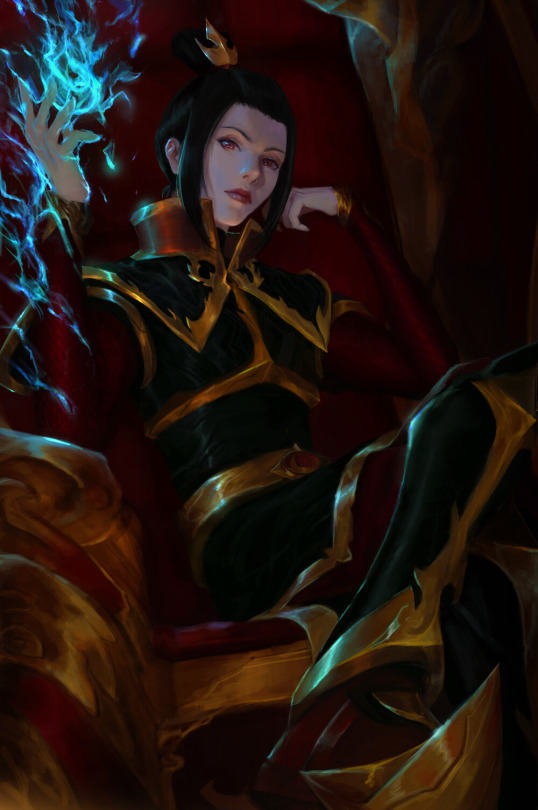
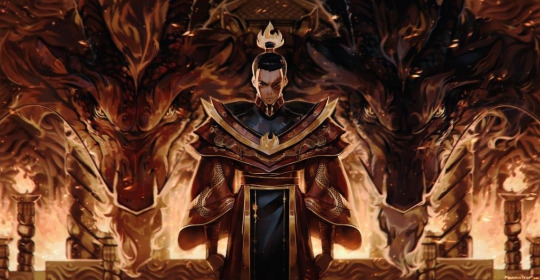




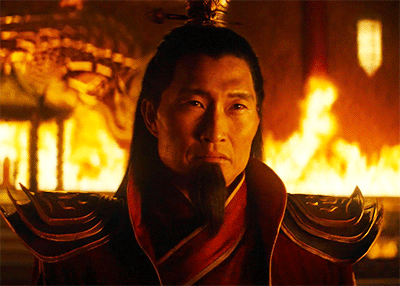

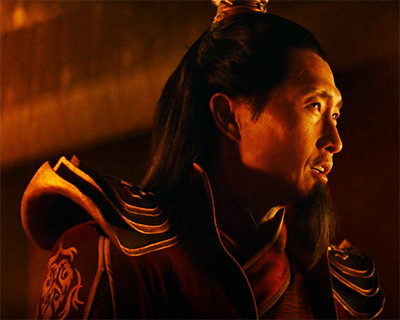


#atla#iroh#ozai#zuko#azula#fire nation royal family#fire family#fire fam#ozai is underrated as a bender#atla fandumb#ozai is underrated and a villian#atla fandom critical#people don't understand the themes of ozai's characterization#ozai is the most powerful firebender according to the creators
26 notes
·
View notes
Note
I'm so intrigued by your preview of young Ozai and Iroh! Is there anything else that you can tell us about them in this episode? Or the context of the animation? Or any backstory for this version of them? Anything will do, seriously. I'm that much hyped! 😍🤩
Hello! Nice to meet you!
Thank you so much!!! I can’t tell you how much that means to me!
Sure I can share a little bit. The episode is called “Legacy of Fire” and is getting a fully animated fight sequence (courtesy of the incredible @samleewins). It’ll be Ozai and Iroh’s Agni Kai. Ozai is only 12 while Iroh is 22 and fresh off his first military tour.
Ozai is a highly skilled prodigy so he has all these fancy moves to show off, but Iroh has age and actual combat experience on his side so Ozai is in for a rude awakening.
The script starts with Iroh visiting Ozai in prison and the brothers discuss their childhoods, their father, their contrary philosophies, their grievances, etc.
It also covers the generational trauma in the family, starting with Sozin’s conflicts with his sister Zeisan, following through to Azulon’s relationship with Ilah, and finally Iroh and Ozai’s childhood.
I have one more picture I can share:

Young Iroh, Azulon, and Ozai.
The episode is meant to be a Patreon exclusive initially but eventually we plan to release it to the public. The reason being that we really need help to continue making it! The project is paid completely out of pocket and some of us don’t even have reliable housing, so every little bit helps! Even just to signal boost us so the YouTube algorithm stops burying us.
Thank you for your question and I hope you’ll enjoy the finished episode when we can get it done!
57 notes
·
View notes
Text
@candleslitsnow asked: "What if when Zuko rerouted Azula's lightning through his heart during their final Agni Kai, it actually killed him? I'm imagining Katara still wins the fight but realizes afterward that he died."
I in fact have an AU where Azula kills Zuko in the Agni Kai: [Link]. Fair warning, the person who prompted me for that one did not like how I filled the prompt, and I had to ban them after they got nasty about it. Also The first fill in this AU was one of the first five headcanon prompts I ever answered, so I didn't have my feet under me yet, and at the risk of sounding pretentious, my philosophy of five headcanons has changed. Oh, and in this scenario, Zuko was obviously dead, and Katara, in the subsequent fight, kills Azula.
1. A fourteen year old killing another fourteen year old doesn't do great things for the kid who did the killing. It doesn't matter that the kids she had killed had just killed her friend, and was going to kill her. It is still horrible. It still leaves Katara, when there is no one around to watch, shaking with it. When she closes her eyes, she sees Azula's face as she suffocates, trapped inside the ice. She hears Zuko's ragged scream, then his moans, then his whimpers, then his silence. And maybe, when she's feeling most self-pitying, she wonders if maybe how understanding Aang is being about it, doesn't make it worse.
2. Aang didn't kill Ozai. He was able to spare him as Katara didn't spare Azula. And he is so understanding about it, so sympathetic. She couldn't take away Azula's bending. She had no choice. It's horrible, and he's sorry she had to do that. But Katara... She knows there was a moment there, when she could have chained Azula. She had her trapped in ice. She could have chained her. But instead, she let her die. She knows this, but she can't tell Aang. She doesn't know which would be worse, if he rejected her, or if he didn't believe her, that she was misremembering, or her mind was playing tricks on her in her horror. But she knows what she did.
3. The one person who does understand, who Katara can go to, who gets it, is her dad. Hakoda knows what it means to go off to war, to take lives, to make devastating choices. And it's into the company of her father and the Southern Water Tribe warriors that Katara retreats, and finds solace, and maybe, the beginnings of self acceptance.
4. Let's take a moment to think about Mai. Barely a month before, Mai put her life on the line to stop Azula from killing Zuko. She went to prison for it. Now she is out of prison, and Zuko is dead anyway. Azula kied him anyway. And Azula is dead too. What good was any of it? What worth did it have? How is she supposed to go forward after this? And the rest of the world is moving on. The war is over, Iroh is on the throne, and people are happy. (How dare they be happy). The world is shifting around her, and she is stuck. No one is stuck on the same page with her, not even Ty Lee. It's different for Ty Lee. Mai stood up to Azula for Zuko, and he's dead. Ty Lee stood up to Azula for Mai, and Mai still alive. Zuko threw his life away after she saved him, and for what? And the worst part is, he didn't throw his life away. He made a difference. The world is changing around her because of the cause he fought for. But it wasn't the cause she ever fought for, and she doesn't know how to take that.
5. Iroh has now lost two sons in the same war, on two different sides. He sent each of them out to fight, for what he believed was right, and each time, he lived, and they did not. The first time he lost a son, he fell apart. He dragged himself home, and into the quiet darkness of his own rooms at the palace. He now understands that he was like a butterfly-wasp in its cocoon, and he would reemerge entirely changed, but back then all he wanted was to die, to not need to continue on. He was forced in that time, to reconsider everything heband his son had fought for, and to conclude it was less than worthless. He can't do that now. What Zuko died for was not worthless. And he has to be firelord, he has to honor the sacrifice his nephew made. He can't sink down into the depths of his own misery. He has work to do. He has to rule. He has to figure out what to do about the succession. He has to move forward. He hates it so much.
#avatar the last airbender#Katara#Mai#Iroh#posts i created#do you want to ask a question it doesn't have to be a question#five headcanons#i ship iroh/tea#katara is the answer#mai doesn't hate you
43 notes
·
View notes
Text
The Slighted Sons: A Character Comparison of Aemond and Zuko
Okay, here I am writing another character comparison analysis between two characters from two different shows. This time I'm going with Aemond Targaryen from HotD and Zuko from AtLA.
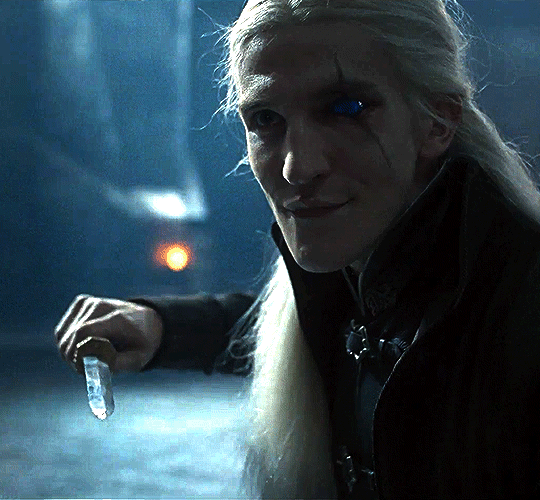
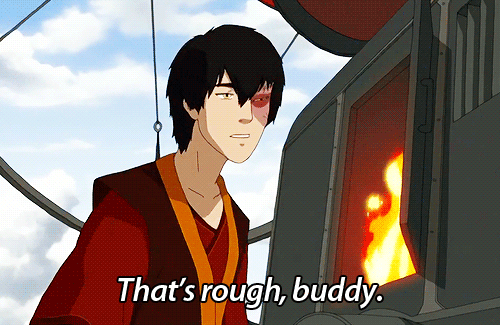
Now you're probably wondering what could these two possibly have in common.
Well, there's plenty actually. Both surface level and a little deeper.
So, brace yourself, and let's go over them.
Also I realize I'm making this post the day the live action remake of AtLA is released on Netflix, and I actually didn't know. I swear I must be psychic or something.
First a quick character synopsis for each.
Prince Aemond Targaryen is the second born son of King Viserys and Queen Alicent. From an young age, Aemond desperately wanted to have a dragon of his own, even more so when his brother and nephews started tormenting him for being the only one without. He eventually got his wish when he claimed the dragon Vhagar, which his cousins and nephews beat him up for that and...well we don't need to go into what happened next.
After that, Aemond became known as the One-Eyed prince and as he grew, he invested in studying his history and philosophy as well as training intensely with the sword.

And then we have Prince Zuko, the oldest son of Firelord Ozai and Ursa, whom left under mysterious circumstances when Zuko was still a child.
When Zuko was invited into a war meeting at the age of thirteen, he spoke out of term, angering his father, whom Zuko had to fight in an Agni Kai to restore his honor. Refusing to fight, and being subsequently scarred as punishment, Ozai banished Zuko, saying the only way Zuko could restore his honor and return home is to capture the Avatar.
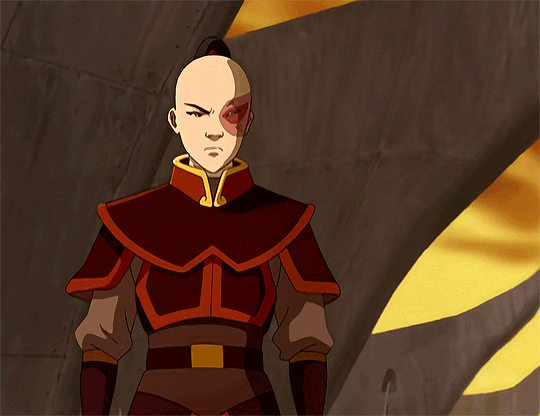
So, on the surface, Aemond and Zuko are both princes, royalty, and they were physically traumatized in one way or another as children, with Aemond taking a dagger to the eye, and Zuko getting burned by his own father.
Oh my god, I just realized both Aemond and Zuko's injuries are in the exact same place, over the left eye. I did not notice that until now! :0
But, as I mentioned before, there's more to compare to:
1. Dysfunction Family Dynamics
Okay, I best cover this part first. Both Aemond and Zuko's family are pretty dysfunctional, but in different ways.
One thing that is similar is the ways they were treated by their fathers.


Aemond is the second son, and in Westeros, second sons don't have much to claim in terms of land or title, they often have to make their own way. He trains with the sword and pays attention to his lessons.
Even if that wasn't the case, Aemond is still overlooked by his father in favor of his sister Rhaenyra.
If we recall from episode 7 of HotD, the night Aemond lost his eye, Rhaenyra, who was trying to cover for her sons when it came to light Aemond called the boys bastards, she demanded of her father that Aemond be 'sharply questioned' so as to learn where he heard such slanders. And it looked like Viserys was prepared to do all this, despite his sons' maimed state.
Much how Viserys often favors his oldest daughter, we saw similar dynamics between Zuko and his own father, whom often favored Zuko's sister Azula.
Despite being the oldest child and Heir Apparent, Zuko was constantly overlooked by Ozai, especially when Azula surpassed Zuko in her firebending.
As Zuko mentioned in the season finale of Book 1, he brought up how Azula was a firebending prodigy that everyone adored, and that his own father had told him this:
"She[Azula] was born lucky. He says I was lucky to be born." -Zuko; AtLA
Now, I want to make clear, I am NOT saying Viserys and Ozai are the exact same people; Viserys may have been a shitty parent, but he was in general a good man, albeit, a man who made passive decisions in attempts to please everyone in his court. Ozai in contrast is just a ruthless and cruel man overall, and it showed in his parenting to Zuko and Azula too.
Ozai was harsher on Zuko presumably he saw him as weaker, and he doted on Azula, probably because her personality was similar to his, being sadistic and taking pleasure in putting fear in others.
But as we saw in the series finale, Azula had a heavy burden placed on her in order to please her father, probably because she did see the way Ozai treated Zuko, and she knows not to get on her father's bad side as a consequence.
Ozai's abuse towards Zuko was direct, while Viserys was more indirect. Viserys was not the one to cause physical harm to Aemond as Ozai caused to Zuko, but Viserys didn't seek any kind of recourse, instead demanding that his sons and grandsons make peace and put the incident behind them...
Yeah, like that was ever going to happen. She said sarcastically.
Oh my god, I actually want to see Ozai and Viserys put in the same room and hear them criticize each other on their parenting styles. OOOOHHH the irony!
Another similarity is the way Aemond and Zuko are doted on by their mothers.
Say what you will about Alicent, but the woman was the one who would do anything to see that justice was served to avenge the loss of her son's eye. She was also the one who comforted Aemond when he was bullied by his brother and nephews for not having a dragon, and she was the one who was frantic with worry upon hearing Aemond lost his eye.

And in the AtLA episode "Zuko Alone" we got to see the way Zuko's mother Ursa doted on him as a boy, being the one to comfort Zuko when he tried to demonstrate what he learned in terms of firebending before his grandfather. She was the one who told Zuko she loved watching what he learned, and that it was okay that he wasn't as ahead in his training as his sister was.
And in the comic, "the Search", we saw Ursa take the fall for the death of Firelord Azulon, doing what she needed to do to see that her son and, her daughter even, would be safe and out of harm's way.

And of course, before continuing with the similarities, I have to talk about the difference in Aemond and Zuko's relationships with their uncles.
Uncle Iroh was basically the father to Zuko his own couldn't be bothered to be, being there to support Zuko during his exile era (even when Zuko would push him away at times), and being there to embrace Zuko when he lost way and found it again.
We stan Uncle Iroh in this household...and his tea making, the guy is a true GOAT, just saying:

It's more than what I can say about Aemond's relationship to his uncle Daemon.
Daemon never really cared about his brother's children with Alicent, presumably because it was an extension of his loathing hatred to Otto Hightower.
And for anyone who has read the Fire and Blood novel, we all know how that ended with Daemon and Aemond fighting each other on top their dragons above the God's Eye.
We also stan Daemon in this household, our toxic problematic Rogue Prince :P

Now, I want to see Daemon in the same room as Ozai. They're both second sons, yet Ozai was pronounced the new FireLord in place of his father. I want to see Daemon take notes on how that was accomplished.
Also, quick note, while Aemond didn't have his uncle to rely on as a father figure, the closest he would get to that is probably Criston Cole, whom Aemond trusted enough to convey his true feelings about the thought of Aegon being king back when he and Criston were looking for the guy in Episode 9
Okay, moving on.
2. Hot Temperaments
Both Zuko and Aemond had shown to have rather firery tempers at times, especially Zuko in Book 1.
Aemond is usually a little more calm and collected, better at masking his emotions, but even he has breaking points, particularly in season finale when he demanded that his nephew Lucerys put out an eye to repay the one he lost, and he snapped when Luke refused.
youtube
And, as we've seen, their hotheadedness got the both of them into a lot of trouble at times, be it Zuko when he challenged Zhao to Agni Kai in his anger to prove he was not the disgraced prince, or Aemond when...he chased Luke on dragonback and, unable to control Vhagar (cause dragons are not slaves), accidentally killed Luke and his dragon, consequently starting the domino effect that led to the Dance of Dragons.
Oh yeah, speaking of Dragon Dances.
3. Dragons!!
Even though we didn't see Zuko riding any actual dragons till season 3 of Legend of Korra, I still think it counts.

I think Zuko could've had a chance to become a rider, if his great grandfather Sozin never started the tradition of hunting dragons in the first place.
Even still, dragons do hold a certain level of cultural significance to the Fire Nation and the FireLord's family.
Uncle Iroh, after all, was known as the Dragon of the West, having earned that title when he supposedly slayed the last dragon before Zuko was born.
Spolier alert, that wasn't actually how it went down.
Even though we never saw Zuko ride a dragon during the duration of AtLA, we did get to see him and Aang learn about firebending from the dragons, having mastered the Dragon Dance, and getting a better understanding of the element of fire and its true nature.
Dragons also hold significant sway for the Targaryen family, and they also held cultural significance for Old Valyria before the Doom.
Aemond's ancestors Aegon the Conqueror, and his sister-wives Rhaenys and Visenya, wouldn't have been able to unite the Seven Kingdoms successfully had they not had dragons at their side (Seven minus Dorne, who refused to kneel to the might of Dragon Fire for as long as they had even after Aegon's official conquest, kinda similar to how the Earth Kingdom refused to bow to the might of the Fire Nation even after the Fire Army's conquest of Ba Sing Se).
One of the dragons that was part of the initial conquest was Vhagar, whom Aemond claimed at the young age of 10, and it's a feat Aemond takes particular pride in, especially when he had gone as long as he had without while the rest of his family had dragons left and right.
Although, Aemond did learn a rather hard lesson from Vhagar, that dragons cannot never truly be tamed, they will do their own thing, and to try and think otherwise can result in deadly consequences.

4. Honor Oriented
Both Aemond and Zuko are heavily duty bound and place varying levels on emphasizing honor.
Zuko, obviously, started off in the series determine to restore his honor by capturing the Avatar, and we saw the lengths he would go to see that through.

Aemond considers himself an honor bound man; while he never had to go on any quests to restore his honor, he was duty driven, taking his school lessons and sword training seriously, refusing to indulge in deprive acts as his brother Aegon had.

5. Sibling Rivalry
Zuko was often pitted against his sister Azula, courtesy of his father, and Azula took pride in being able to master firebending techniques at a faster pace than Zuko could hope to.
And it was something Azula would snubly rub in Zuko's face, even more so when the two would actually fight, such as in Book 2, when Zuko went after Azula for lying to him, and Azula pointing out how much of a disappointment child Zuko is to their father.
Their rivalry, I would also like to point up, was dialed up compared to Aemond's rivalry with his brother Aegon.
I mean, Zuko and Azula had a physical fight in the form of Agni Kai during the series finale, which would also determine who would become the next firelord.
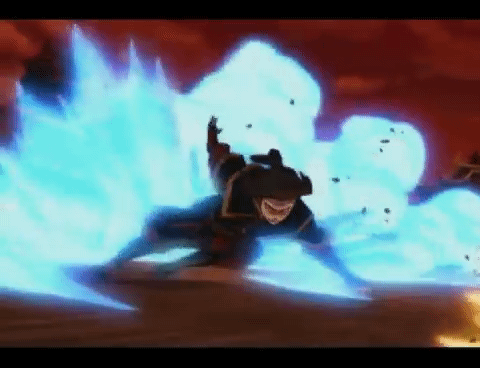
While Aemond never had such fights against Aegon, the guy did resent the fact Aegon was firstborn, and because of that, he was expected to become king in the eyes of the Greens, even though Aegon was not deemed fit by Aemond to be king due to his excess indulgences in wine and women and the fact Aegon shirked away from his duties and training, while Aemond surpassed Aegon in all these things.
Aegon didn't exactly make things easy for Aemond too when they were children, especially with the Pink Dread prank Aegon clearly convinced Jace and Luke to pull on Aemond.
Aemond knows he is better suited to the position as king, but he is a second son, so there's no chance of that happening (that is until an tragic accident at Rook's Rest during the Dance left Aegon critically injured and unable to perform his kingly duties, leaving Aemond in charge as Prince Regent).
The resentment is there nevertheless.

6. Fan Favorites
Be honest, you had the biggest crush on Zuko when you first saw the show...well, I did anyway.
I was in middle school when AtLA first aired, and I would like to credit Zuko as the first fictional guy whom I really crushed on as a girl who was slowly moving into my teen years.
This scene especially, I'd like to credit for...definitely awakening something in me...;)
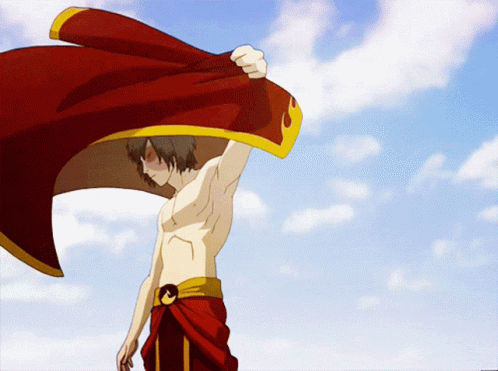
I also know for a fact people felt similar tingly feels when we saw Aemond as an grown man.
Certainly helped with actor Ewan Mitchell's portrayal and how he brought adult Aemond to life, especially with this scene:

Be honest, you felt things too about Aemond...I certainly did.
Actually I know this is fact, why else would there be so much smut related content around Aemond on this sight?
Conclusion
Aemond and Zuko are princes of prominent royal families who are also slighted sons; one was firstborn and the other is second born, but both slighted nonetheless, by their families, especially by their fathers
Much so that they had to find father figures in other people.
Both were heavily doted on by their mothers, both received physical scars by their family members, and both learned different lessons from the dragons, whom hold cultural significance to their families as well as their ancestral lands.
Both were pitted against their siblings, and both have fiery hot tempers that got into trouble on more than once occasion.
And both Aemond and Zuko are fan favorites to the point where numerous fans write fanfiction on both characters, be it reader inserts, or ships, etc.
We love and stan our brooding, tragic princes, no matter how toxic and angry they may be.
Also, I really want to write a crossover between HotD and AtLA, but I would probably do like maybe two chapters possibly (I say that, but knowing me, that would probably extend into a longer story, and I already have enough of those to work on as it is).
I would like to see what it would look like if Aemond and Zuko were put in the same room.
Have a nice day, y'all :)


#hotd#atla#aemond targaryen#zuko#prince zuko#aemond#house of the dragon aemond#iroh#aegon ii#atla azula#Youtube
17 notes
·
View notes
Text
Episodes 5 and 6 formally introduce us to the spiritual side of Avatar. I admit, I'm surprised to see this here. It's the sort of thing that adaptations typically sweep under the rug.
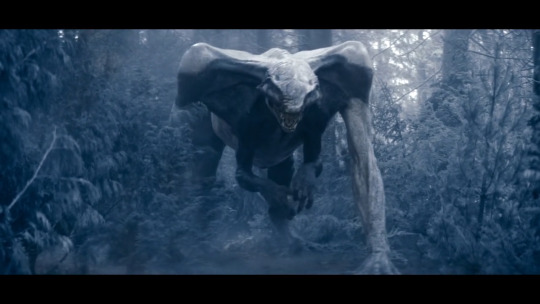
Hei Bei is here and looking good. Bringing peace to the forest spirit is the ATLA plot that forms the basis for episode 5. But, as we've come to expect, the show has some other stuff it wants to slip into the remix. In this case, an unexpected appearance from the brand's most popular spirits, Wan Shi Tong and Koh the Face Stealer.


They even manage to rope the Mother of Faces in while they're at it; Appearing not in person, but in effigy.

And they name-drop the Fog of Lost Souls. These episodes are eager to let you know how much Avatar lore they know.
Despite Hei Bei providing the inciting incident of the episode, Koh more or less steals the show. In fact, he steals the entire plot. The opening of the episode features Aang going in search of the town's missing villagers and finding Hei Bei's destroyed shrine. It even makes a point to show us that the scars on Hei Bei's totem mirror scars on his body.


But once Koh enters the picture, Hei Bei drops out of the plot entirely. He's revealed to have been a complete red herring, as it's actually Koh menacing that town. The burnt shrine and scarred bear spirit are just. Like. An unrelated thing happening nearby, I guess.
...
Okay. Weirdass choice to make, making Hei Bei a glorified cameo in his own plot.
This abrupt shift in focus is super distracting and makes episode 5 feel like a nonsense festival.
Episode 6, however, makes wonderful artistic use of Koh as the framing device to set up a conversation about the faces we wear. As Aang races to save Katara and Sokka from the Face-Stealer, the show chooses now to adapt both the story of the Blue Spirit and to relay the story of Zuko and Ozai's Agni Kai.

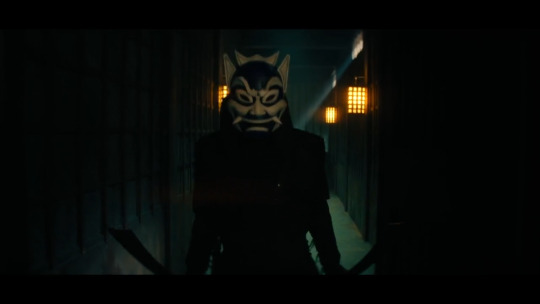


This is a clever set of elements to juxtapose against one another and weave into a single narrative. Episode 5 is a mess for trying to juggle like half of the spiritual elements ever introduced in the franchise as a whole, but once it settles on Koh as its talking point, episode 6 makes great use of him to lend some philosophy to Zuko's journey.
13 notes
·
View notes
Note
How’s it going @juniperhillpatient ?
I know that you’re a huge canon of the horror genre. But what are your opinions on cosmic horror. Of the Lovecraft variety and the like. How humans deal with the ideas of ancient demon gods that control reality, and falling into madness or worship, or hostilities.
How would you consider cosmic horror in terms of Azutara? If indeed, you do find Cosmic horror to be interesting.
Say Azula and Katara are both tormented by their own brands of cosmic monstrosities. Let’s say Tui (basically an ATLA version of Cthulhu) targets Katara at her village in the SWT (or conversely somewhere in New England) and assaults the community. Perhaps indirectly or through a cult of sorts. In typical Lovecraft fashion. Minus the Racism!
I know that Azula usually ends up taking the role of a detective or PI in your stories. Which is one career I can absolutely see Azula doing (and enjoying) by the by.
Anyway, Hakoda perhaps calls up the Police of his state or county. Asking (perhaps even pleading?) for assistance. They refuse. But one kind souls directs Hakoda to an up and coming Private Investigator. One who’s has penachant for solving crimes, and also has a not totally undeserved crackpot reputation. Especially, considering she deals with horrible truths of the world others don’t want to accept. That PI is of course Azula.
Azula herself is also tormented by Cosmic horrors. In her case by the draconian demon god Agni. It also doesn’t help that her father Ozai is the head priest of the deity’s…cult. Which haunts her very shadows.
Azula and Katara then meet for the first time and have to deal with two differing cosmic horror deities, their warring cults, human sacrifice, murder, and a whole host of crime sand evils. And also their budding… desires for each other. and the story goes on from there. Oh and Azula and Katara are about 23-25 years old at the start of the AU.
So what do you think?
Also how do you think either Azula or Katara deal would deal with the realization on the “reality on unreality” . To enumerate, take how in the Cthulhu Mythos the deity called the “blind idiot God” is also known as “the great dreamer”. Why? Because everything that exist is dream. This one bbeings dream specifically. Everyone and everything and every experience (no matter positive or negative) is but an expression of a thought. A dream coming from an unconscious non-personal deity. Even Cthulhu and the other gods are mere instances of this dream. An individual is but the mirror image of a foreign intelligence. A person is not themselves. And if that creature ever wakes up, “reality” blinks out of existence. Everything gone faster than a snap.
That whole idea in probably (inspired by) something that Lovecraft got from the Vedas (probably the “Hymn of Creation”?) or the Hindu philosopher Shankara. It also gives me a massive migraine just to think about. But for the sake another Azutara Au idea, we must press on!
Everything is (in a word) a simulation, a dream. Including the “gods”, including individual persons, including Azula and Katara. How would they [Azula and Katara] deal with this existential question? Would succumb to despair and perhaps fall to madness. Or perhaps the two would rely on each other and come to embrace Descartes philosophy “I think therefore I am”. Leading Azutara to conclude that they do exist in spite of the machinations of Tui and Agni (who are demon gods tormenting them in this au) in trying destroy their sanity and attack their (Azula and Katara’s) very sense of self.
How would all these struggles bring them [Azula and Katara] closer? Or would it see the two fall apart. Or fall apart temporarily , but ultimately help each other in staying sane. Which is a big part of the “Call of Cthulhu” RPG.
Sorry if the ask was a little long.
—745 Voice of the People
Hi there! I enjoy Lovecraftian horror - I’m not hugely educated on it but conceptually I like it & I had a lot of fun with the ‘Call of Cthulu’ game I played a while back. My brother & I were just talking about my character & our old campaign earlier tonight!
Your idea seems like a really interesting fic that could truly dive into some existential dread & terror in a fascinating way. And the concept for the plot with Hakoda reaching out to Azula, who solves mysterious issues & is almost considered a crockpot but actually knows what goes on in the world because Ozai is the head of this cult?? Yeah that’s Super interesting!
I love the idea of Azula & Katara navigating this existential terror & decline in their sanity while also facing feelings for each other. This seems like a really fascinating fic concept!
8 notes
·
View notes
Text
Cursed Ashiya Sword / 妖刀アシュラ
The Cursed Ashiya Sword is a powerful blade with a high Critical stat at the cost of draining the wielder's hit points. The name Ashiya is likely derived from Ashiya Dōman (JP: 蘆屋道満), a practitioner of Onmyōdō (JP: 陰陽道)—a form of divination based around astronomy, calendars and directions with roots in Chinese philosophy and spirituality. Onmyōdō also was regularly interpreted as a form of sorcery called jujutsu (JP: 呪術), and was extended in various stories as allowing the transmutation of objects and animals. During the Heian period (roughly the tenth century), Dōman was the rival to the most famous onmyōji, Abe no Seimei, who served the emperors of the time. Dōman regularly attempted to thwart the younger Seimei to make him less appealing and claim his titles. This dynamic between the two brought upon them the nicknames 悪の道満 (rōmaji: aku no dōman) "Evil Dōman" and 正義の晴明 (rōmaji: seigi no seimei) "Righteous Seimei." Eventually, Dōman lost in a magician's duel against Seimei, and he was banished to Harima Province.
In Japanese, the Cursed Ashiya Sword is called 妖刀アシュラ (rōmaji: yōtō ashura) typically translated as "Bewitching Sword Ashura". The word 妖刀, while literally meaning "a sword with mysterious charm" refers to the common trope of a cursed magical sword that exudes an odd aura. This originates from the legends surrounding swords forged by the famous Muramasa school of swordsmiths. Their swords were known for bein exceptionally crafted and incredibly sharp; such quality attracted the interest of Mikawa Province and Tokugawa Ieyasu, founder of the Tokugawa shogunate. However, a series of misfortune soured the Muramasa name across Japan. Across the span of one hundred years, multiple members of the Tokugawa family were harmed or killed by crafts bearing the Muramasa name. Because of this, it was said that Tokugawa Ieyasu banned the use of Muramasa blades. Though this prohibition is most certainly tall-tale, it did not stop the sullying of the Muramasa school with stories of their weapons being cursed. These went so far as to claim Muramasa blades were bloodthirsty monstrosities, created by an insane swordsmith, that could not be sheathed unless it has spilled blood. Some even said the swords would drive men to murder or taking their own lives. These legends are reflected in the Cursed Ashiya Sword's stats and self-damaging properties.
As for the actual name in the sword, the Japanese アシュラ ashura is typically used to refer to the asura, a type of demigod that originates in Hindu folklore that was adopted into Buddhism. Though the asura were not considered purely evil entities, the name often connotates unpleasant characteristics. In Buddhism, they reside in the Kāmadhātu, the "desire realm", chase vices and addictions far easier, are easily corrupted, and have frequently been referred as "demons." In Hinduism, many gods, including Indra and Agni, have been called asura; however, it is suggested that during the war between Indra and Vritra, the asura that sided with good were elevated to the status of Deva, while the rest that joined evil would keep the asura name. It is likely for this demonic association the asura carry that gave their name to the sword-equivalent of a Devil Axe.
This was a segment from a larger document reviewing the name of most every weapon and item in Three Houses and Three Hopes. Click Here to read it in full.
3 notes
·
View notes
Text
Paūrāṇic Ganesha (Part-VII)
Series on Ganesha the Great!
Dr. Dhananjay B. Ghare
(Continued from Part-VI)
This mini ‘one_act_play’ in english, is based on ‘11 chapters of Ganesha Geetā’ and is designed to convey the theoretical philosophical essence of ‘Ganesha Purāṇa’ aid to popularize ‘Global_awareness’ about ‘Lord Ganesha’, compiled by sage Vyāsa in the form of a dialogue between ‘Lord Gajānana’ an incarnation of Lord…

View On WordPress
#Aṣṭānga Yoga#Agni#जीवात्मा#Ganesh#Ganesh Gita#Ganesh Purana#Gita#Panchbhuta#Philosophy#Prakriti#Pranayama#Samādhi#Sanyasa Yoga#Universe#Upanishad#Vedas#Vedic#Yoga#Yogasana#Yogsutra
0 notes
Text
Inner peace, Not found
**Scene:** A serene garden, bathed in the golden light of the setting sun. Azula sits cross-legged, attempting to meditate.
**Azula:** (Whispering) Breathe in, breathe out. Focus on the present moment.
**Inner Voice:** (Sarcastic) Oh, you think you can just *will* peace into existence? You're a firebender, not a miracle worker.
**Azula:** (Ignoring the voice) Calm the mind, still the body.
**Inner Voice:** (Scoffs) You're still thinking about that blasted Agni Kai. All those years, all that power, gone in a flash.
**Azula:** (Eyes snapping open) Shut up! I'm trying!
**Inner Voice:** Trying? You've been trying for months! You've read every philosophy book, tried every breathing technique, yet you still feel that burning rage inside.
**Azula:** (Frustrated) It's not rage! It's... energy. Untamed, yes, but powerful. I can control it. I will control it.
**Inner Voice:** (Smirking) Oh, you think you can control it? You haven't even controlled yourself. You're still a prisoner of your own anger.
**Azula:** (Standing up, fists clenched) I'm not a prisoner! I am Azula, Princess of the Fire Nation! I will not be defined by my past!
**Inner Voice:** (Whispering) But you are. You always will be.
**Azula:** (Turning away, voice trembling) No... I won't let you win.
**Inner Voice:** (Laughing) Win? You think this is a game? You're fighting a battle against yourself, Azula. And you're losing.
**Azula:** (Sitting back down, defeated) Maybe you're right. Maybe I am losing.
**Inner Voice:** (Softly) Maybe it's time to let go. To accept what you are, and what you've done.
**Azula:** (Eyes closed, tears welling up) I can't. Not yet.
**Inner Voice:** (Silence)
**Azula:** (Whispering) But maybe... maybe one day.
**(The sun dips below the horizon, casting long shadows across the garden. Azula remains seated, her face a mask of both pain and hope.)**
2 notes
·
View notes
Text



Hare Sri Krishna ॐ
Hari Om Namo Narayana - Hari Om Tat Sat - Jai Shri Narayana Ke Vishwaroopa!
Vishnu Vishvarupa by Talon Abraxas
Vishwaroopa ("Universal form", "Omni-form"), also known popularly as Vishvarupa Darshan, Vishwaroopa and Virata rupa, is an iconographical form and manifestation of Shri Vishnu or his avatar Krishna. The direct revelation by the One without a Second, Master-Lord of the Universe. In the climactic war in the Mahabharata, the Pandava prince Arjuna and his brothers fight against their cousins, the Kauravas with Shri Vishnus Avatar Lord Krishna as his charioteer. Faced with moral dilemma that whether or not to fight against and kill his own or for dharma, Shri Krishna discourses him about life and death and reveals his Vishvarupa as a theophany. In Bhagawat Geeta, Krishna reveals himself as the Supreme Being and finally displays his Vishvaroopa to Arjuna. Arjuna experiences the vision of the Vishwaroopa with divine vision.
Lord Vishnu here is depicted in a grand manner as representing a magnification of his essence containing the entire cosmos, in a form known as Vishwaroop (Vishwa - the cosmos; Roop - form or manifestation). This depiction came from the ancient Hindu philosophy which indicated that through the diversities of creation there always is a connecting essence that threads everything into a unified whole. While the Trinity of Brahma, Vishnu and Shiva represents the Supreme Being's diversified manifestation, the Vishwaroop form of Vishnu represents the spiritual concept of all creation being nothing more than diverse manifestations of a single essence. Since Brahma's function ceases once the process of Creation is completed and Shiva himself represents the cosmos or an extension of the cosmos, it is Shri Vishnu, in whom the Creation sustains and prevails, who requires cosmic magnification as the form of Vishwaroop to drive home the point that the Supreme Being not only contains all creation but also sustains it.
The Vishwaroop depiction shows Shri Vishnu as having innumerable forms eyes faces mouths and ears. All creatures of the universe are part of him. He is the infinite universe, without a beginning or and end. Each of these has its own cosmic function or represents an aspect of the cosmos. The gods depicted include Shiva, Brahma, Ganesha, Hanuman, Indra, Agni, Surya , Chandra, Maruta (Wind God), Kubera (God of wealth), Varuna (God of water) and Yama (Time) and Brahma's three sons. Various sages, asuras , demons, gods and goddesses, while Shri Vishnu retains the central position. Amongst few, Shiva, Brahma and Vishnu together form the Trinity, Ganesh and Hanuman represent faith and divinity. Agni or Fire represents life, energy and vitality. Maruta, the wind-god represents space, while Indra represents rains and cosmic balance. Yama depicts the infinite nature of time while Varuna the ocean God represents water. Kubera represents prosperity and riches. The Sun and Moon represent the cycle of birth, death, decay and finally dissolution. Brahma's three sons represent the entire mankind. Taken together as one entity they constitute the entire cosmos.!!!
20 notes
·
View notes